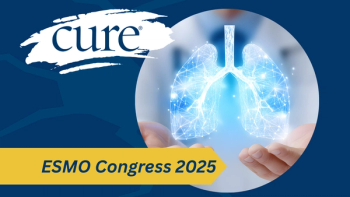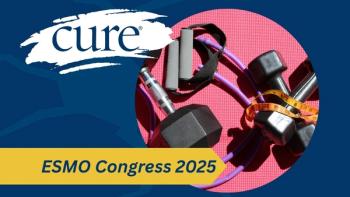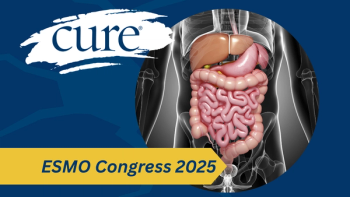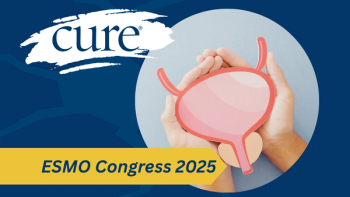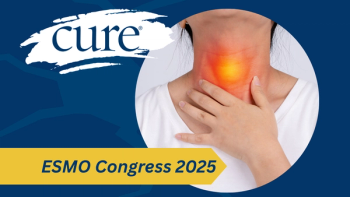
Drug Pair is Active in Melanoma and Head and Neck Cancer
Patients with squamous cell carcinoma of the head and neck (SCCHC) and those with melanoma saw some promising activity with the drug combination of epacadostat and Opdivo (nivolumab), according to findings from the phase 1/2 ECHO-204 study presented at the 2017 ASCO Annual Meeting.
Patients with squamous cell carcinoma of the head and neck (SCCHC) and those with melanoma saw some promising activity with the drug combination of epacadostat and Opdivo (nivolumab), according to findings from the phase 1/2 ECHO-204 study presented at the 2017 ASCO Annual Meeting.
The combination of epacadostat and Opdivo demonstrated an objective response rate (ORR) of 63 percent and a complete response (CR) rate of 5 percent for patients with treatment-naive melanoma, in the multi-arm, open-label trial. In those with SCCHC, the ORR was 23 percent and the CR rate was 3 percent. The combination was not effective in unselected patients with ovarian cancer and colorectal cancer (CRC).
"Epacadostat plus nivolumab was active in phase 2 melanoma and squamous cell carcinoma of the head and neck cohorts," said study coauthor Karl D. Lewis, M.D., associate professor, Division of Medical Oncology, University of Colorado Anschutz Medical Campus. "Response was observed regardless of PD-L1 expression and HPV status. All responses were ongoing at data cutoff."
In the phase 1 portion of the study, the epacadostat dose was escalated from 25 mg twice daily to 300 mg twice daily. In the phase 2 portion, patients received a 100 mg twice daily and 300 mg twice daily dose of epacadostat. Opdivo was originally administered at 3 mg/kg every two weeks, which was switched to 240 mg IV every two weeks in the phase 2 portion of the study. The findings presented at ASCO for safety were from both portions of the study while the efficacy findings were from just the phase 2 cohort.
For patients with untreated melanoma (40 patients), the ORR with the 100-mg dose (six patients) of epacadostat was 100 percent, which consisted entirely of partial responses. With the 300-mg dose (34 patients), the ORR was 56 percent and the CR rate was 6 percent. The disease control rate (DCR; ORR plus stable disease) was 85 percent. In those with PD-L1—positive tumors (seven patients), the ORR was 71 percent versus 29 percent in the PD-L1–negative group (seven patients). All responses were ongoing, with a median duration of 16+ weeks.
In the SCCHN group, in which patients had received two or fewer prior lines of therapy, the ORR with the 100-mg dose (seven patients) of epacadostat was 14 percent, there were no CRs, and the DCR was 61 percent. In the 300-mg arm (24 patients), the ORR was 25 percent, with one CR and a DCR of 71 percent. Patients with PD-L1—positive tumors (10 patients) had an ORR of 30 percent and those with negative tumors (eight patients) had an ORR of 13 percent. All responses were ongoing at the analysis, with a median greater than 24+ weeks.
In 29 evaluable patients with ovarian cancer, the ORR was 14 percent and the DCR was 31 percent. There was one CR in a patient with treatment naive, BRCA-negative, PD-L1—positive disease. In 26 patients with CRC, those with microsatellite instability (MSI) had an ORR of 25 percent and those with microsatellite stable disease did not experience a response.
"Epacadostat plus nivolumab did not demonstrate an efficacy signal in the unselected populations of refractory ovarian cancer and CRC patients," Lewis said of the results. Regarding future investigations, he noted that the "preliminary safety and efficacy results support further investigation of Opdivo and epacadostat in treatment-naive patients with melanoma and in patients with SCCHN."
Across all patients, adverse events (AEs) of any grade were experienced by 83 percent of individuals treated with the 100-mg dose of epacadostat and 73 percent with the 300-mg dose. Grade 3/4 AEs were experienced by 25 percent and 27 percent of those in the 100 mg and 300 mg dose arms, respectively. Treatment-related AEs led to discontinuation for 6 percent of those in the 100-mg group versus 12 percent for the 300-mg arm. The most common grade 3/4 treatment-related AEs were rash, which occurred in 10 percent of those in the 100-mg arm and for 15 percent with the 300-mg dose.
"ECHO-204 study results show that epacadostat plus nivolumab was generally well tolerated among patients with select advanced solid tumors," Lewis said. "Treatment-related grade 3 rash rate was higher with epacadostat 300 mg versus 100 mg twice daily. As was the rate of treatment-related AEs leading to discontinuation."
The phase 2 portion of the ECHO-204 study continues to enroll participants (

